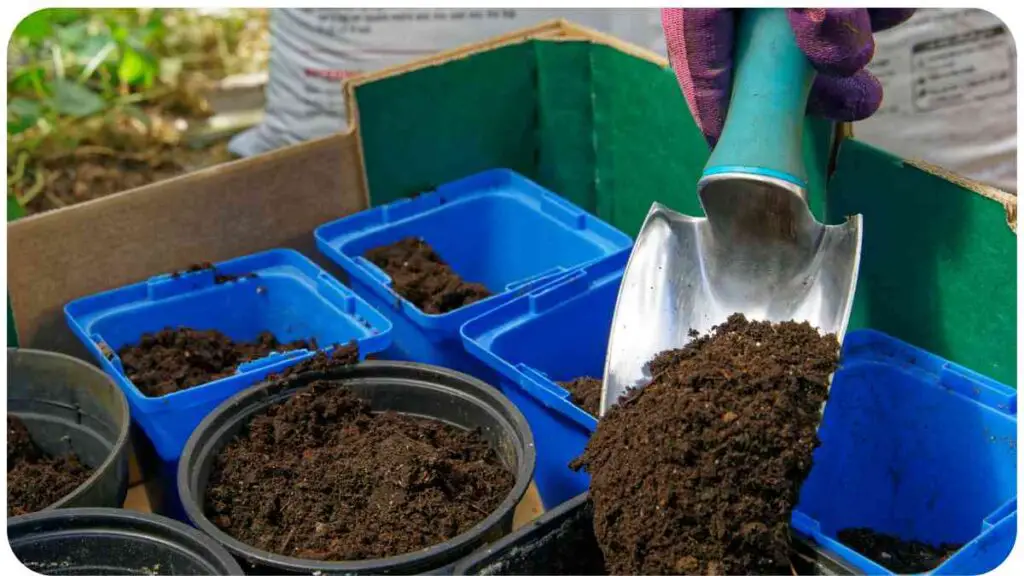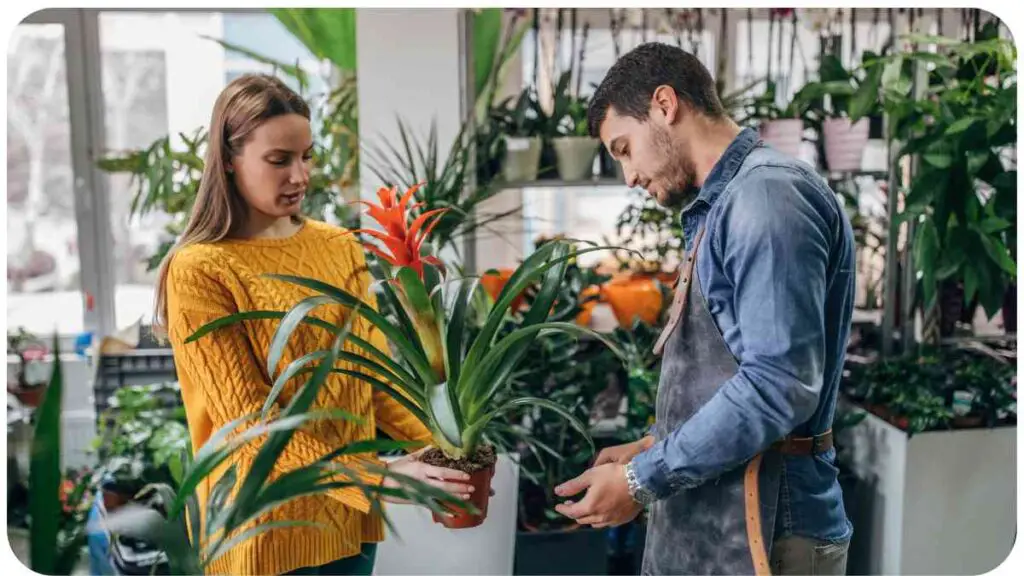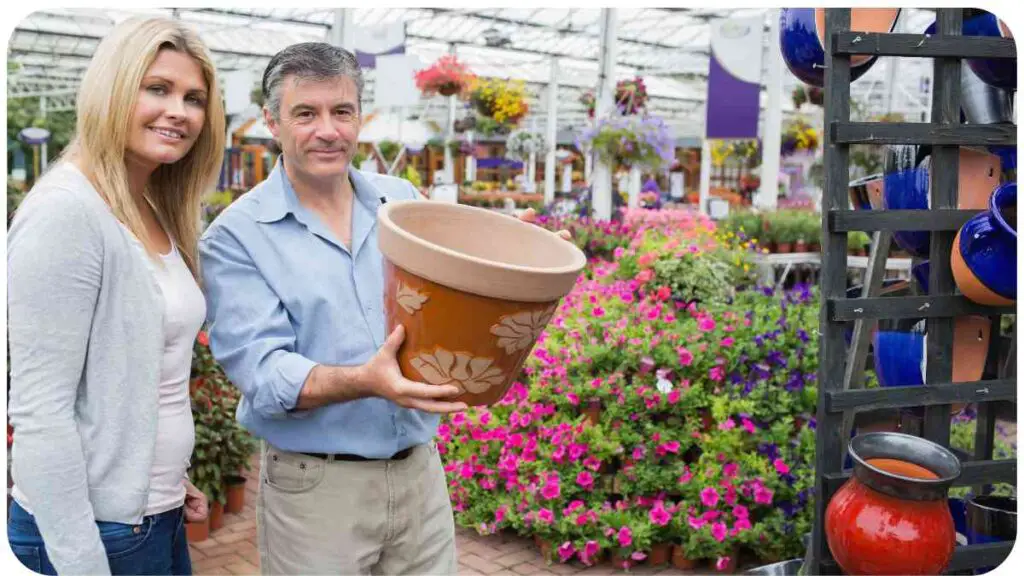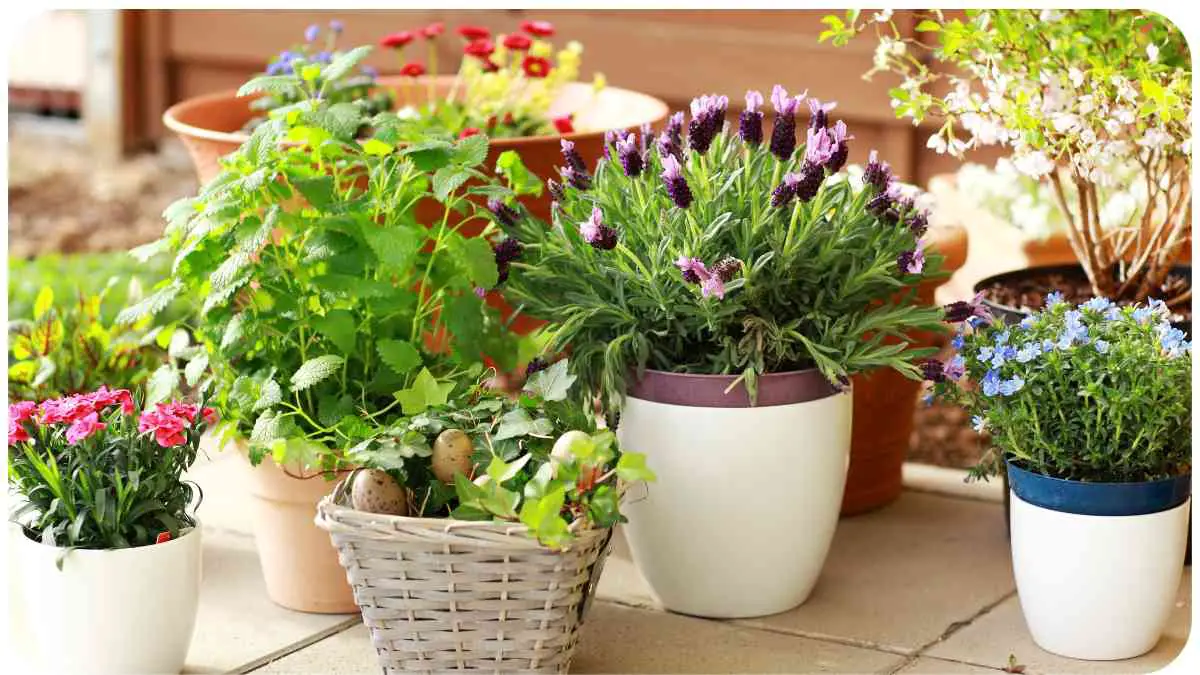When it comes to growing healthy and vibrant flowers, selecting the right potting mix is crucial. Whether you’re a seasoned gardener or just starting out, understanding the nuances of potting mixes can make a significant difference in the success of your garden.
In this comprehensive guide, we’ll delve into the world of potting mixes, explore their key components, discuss different types, and provide practical tips for choosing the best one for your flowers.
| Key Takeaways |
|---|
| 1. Selecting the right potting mix is crucial for flower |
| health and vitality. |
| 2. Consider factors such as drainage, aeration, and nutrient |
| content when choosing a potting mix. |
| 3. Different types of flowers may require specific potting |
| mixes tailored to their needs. |
| 4. Proper watering, fertilization, and pest control are |
| essential for using potting mixes effectively. |
| 5. Experimentation and adjustment may be necessary to find |
| the perfect potting mix for your flowers. |
2. Understanding Potting Mix

Potting mix, also known as potting soil, is a specially formulated growing medium designed to provide plants with the nutrients, aeration, and drainage they need to thrive in containers. Unlike garden soil, potting mix is lightweight and free-draining, making it ideal for potted plants where proper root aeration and moisture retention are essential.
When caring for plumeria, selecting the right potting mix is crucial. To ensure optimal growth and blooms, it’s essential to use a mix specifically formulated for plumeria plants.” best potting mix for plumeria
Key Components of a Potting Mix
| Component | Function |
|---|---|
| Peat Moss | Retains moisture and provides aeration. |
| Perlite | Improves drainage and prevents compaction. |
| Vermiculite | Helps with moisture retention and nutrient exchange. |
| Compost | Adds nutrients and beneficial microorganisms. |
| Sand | Enhances drainage in heavy potting mixes. |
| Pine Bark | Improves aeration and adds structure to the mix. |
| Coconut Coir | Sustainable alternative to peat moss, retains moisture. |
| Fertilizers | Provides essential nutrients for plant growth. |
| Limestone | Adjusts pH levels for optimal plant growth. |
3. Types of Potting Mixes
Potting mixes come in various formulations tailored to different plant needs. Understanding these differences can help you choose the best one for your flowers.
Comparison of Different Types of Potting Mixes
| Type | Description |
|---|---|
| All-Purpose Mix | Versatile mix suitable for a wide range of plants. |
| Cactus Mix | Specifically formulated for cacti and succulents, provides excellent drainage. |
| Orchid Mix | Designed for epiphytic orchids, provides good aeration and drainage. |
| Seed Starting Mix | Fine-textured mix ideal for germinating seeds, provides gentle support for delicate seedlings. |
| African Violet Mix | Acidic mix tailored to the needs of African violets, promotes healthy foliage and blooms. |
| Bromeliad Mix | Lightweight mix enriched with organic matter, provides optimal conditions for bromeliad growth. |
| Acid-Loving Mix | Acidic mix suitable for plants like azaleas, camellias, and blueberries, helps maintain proper pH levels. |
| Bonsai Mix | Well-draining mix specially formulated for bonsai trees, provides the right balance of water and air. |
4. Choosing the Right Potting Mix for Your Flowers

Selecting the best potting mix for your flowers depends on various factors such as the type of flowers you’re growing, their specific needs, and your local climate conditions. Here’s a guide to help you make the right choice:
Anoles thrive in environments with suitable substrate. While potting soil can be used, it’s important to ensure it’s safe and non-toxic for these reptiles to prevent any harm or health issues.” potting soil for anoles
Recommended Potting Mixes for Different Types of Flowers
| Flower Type | Recommended Potting Mix |
|---|---|
| Annuals | All-Purpose Mix |
| Perennials | All-Purpose Mix |
| Roses | Rose-Specific Potting Mix |
| Orchids | Orchid Mix |
| Succulents | Cactus Mix |
| African Violets | African Violet Mix |
| Ferns | Peat-Based Mix with Added Perlite |
| Bulbs | Well-Draining Mix |
| Tropical Plants | Tropical Plant Mix |
| Herbs | Well-Draining Mix with Added Compost |
Keep in mind that while these recommendations serve as general guidelines, it’s essential to consider other factors such as your watering routine, the size of your containers, and the specific growing conditions in your area.
5. Making Your Own Potting Mix
If you’re feeling adventurous or prefer a more hands-on approach, you can create your own potting mix tailored to your flowers’ needs. Here’s a basic recipe to get you started:
DIY Potting Mix Recipe
- 1 part peat moss or coconut coir
- 1 part perlite or vermiculite
- 1 part compost
- Optional: a small amount of sand or pine bark for additional drainage
Regularly replacing potting soil is essential to maintain plant health and vitality. Over time, soil can become depleted of nutrients and compacted, hindering plant growth and root development.” replace potting soil
Mix these ingredients thoroughly, and you’ll have a custom potting mix that provides excellent aeration, moisture retention, and nutrients for your flowers.
6. Tips for Using Potting Mixes Effectively
Once you’ve selected or created the perfect potting mix for your flowers, here are some tips to ensure you get the most out of it:
- Choose the Right Container Size: Select containers that provide adequate space for your flowers’ roots to grow. Avoid pots that are too small, as they can restrict root development and lead to stunted growth.
- Ensure Proper Drainage: Good drainage is essential for preventing waterlogged soil, which can suffocate plant roots and promote root rot. Use pots with drainage holes at the bottom and add a layer of gravel or broken pottery shards to improve drainage.
- Water Wisely: Avoid overwatering your flowers, as this can lead to root rot and other moisture-related issues. Allow the top inch of the potting mix to dry out before watering again, and always water at the base of the plant to avoid wetting the foliage.
- Monitor Nutrient Levels: While potting mixes contain some nutrients, they can become depleted over time, especially in containers with frequent watering. Use a balanced liquid fertilizer to supplement your flowers’ nutrient needs regularly, following the manufacturer’s instructions.
- Repot When Necessary: As your flowers grow, they may outgrow their containers or deplete the nutrients in the potting mix. Monitor their growth and repot them into larger containers with fresh potting mix as needed to ensure they continue to thrive.
- Protect from Pests and Diseases: Inspect your flowers regularly for signs of pests or diseases, such as yellowing leaves, wilting, or unusual spots. Treat any infestations promptly using organic or chemical pest control methods to prevent them from spreading to other plants.
By following these tips, you can maximize the effectiveness of your potting mix and create an optimal growing environment for your flowers.
Instead of discarding old potting soil, consider regenerating it to save money and reduce waste. With the right techniques, you can rejuvenate old soil and provide your plants with a nutrient-rich growing medium.” regenerate old potting soil
7. Common Mistakes to Avoid

Even experienced gardeners can make mistakes when it comes to using potting mixes. Here are some common pitfalls to watch out for:
- Using Garden Soil: Garden soil is too heavy for containers and can lead to poor drainage and compacted roots. Stick to specialized potting mixes designed for container gardening.
- Ignoring Drainage: Proper drainage is crucial for healthy root development. Ensure your containers have adequate drainage holes and use potting mixes with perlite or vermiculite to improve drainage.
- Overwatering: One of the most common mistakes is watering plants too frequently or too much. Allow the top layer of the potting mix to dry out between waterings to prevent waterlogged soil.
- Skipping Fertilization: While potting mixes contain some nutrients, they can become depleted over time. Supplement your flowers’ nutrient needs with regular fertilization to promote healthy growth and blooming.
- Neglecting Pest Control: Pests can wreak havoc on container-grown plants. Inspect your flowers regularly for signs of pests or diseases, and take appropriate action to control them before they become a problem.
When it’s time to replace potting soil, it’s important to do so properly to ensure the continued health of your plants. Follow this comprehensive guide for step-by-step instructions on how to replace old soil.” complete guide for replacing potting soil
By avoiding these common mistakes and following best practices, you can ensure your flowers thrive in their container garden.
8. Conclusion
Choosing the best potting mix for your flowers is essential for their overall health and vitality. By understanding the key components of potting mixes, exploring different types available, and considering your flowers’ specific needs, you can create an optimal growing environment that promotes robust growth and abundant blooms.
Whether you opt for a pre-packaged potting mix or decide to make your own, it’s important to prioritize factors such as drainage, aeration, and nutrient content. Additionally, using potting mixes effectively by following proper watering practices, monitoring nutrient levels, and repotting as needed will ensure your flowers thrive in their container garden.
While there may be some trial and error involved in finding the perfect potting mix for your flowers, don’t be afraid to experiment and adjust as needed. Gardening is as much about learning and discovery as it is about nurturing plants, so embrace the process and enjoy watching your flowers flourish.
With the right potting mix and a little tender loving care, your container garden can be a beautiful oasis bursting with color and life.
I hope this guide has been helpful in navigating the world of potting mixes and empowering you to make informed decisions for your flower garden. Happy gardening!
Further Reading
- What Is the Best Soil to Use for Planting Flowers?: This article provides insights into the best soil options for planting flowers, including recommendations for various types of gardens and containers.
- Dirt or Soil? What’s the Difference?: Learn about the distinction between dirt and soil, and why using quality potting soil is essential for successful container gardening.
- Choosing the Best Potting Soil for Container Gardening: Discover tips and recommendations for selecting the right potting soil for your container garden, ensuring optimal growth and plant health.

For 15 years, Hellen James has worked in the gardening industry as an expert and landscape designer. During her career, she has worked for a variety of businesses that specialize in landscaping and gardening from small firms to large corporations.

